22 April 2007
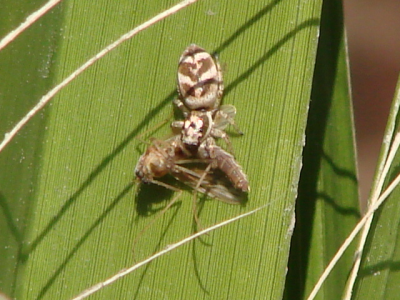
A Jumping Spider Predating on a Flying Insect
Date: 1 January 2007
Photo by Aymen Ibrahem, Senior Astronomy Specialist
Jumping spiders are small, efficient insectivores. They are not a threat or harmful to man. They are beneficial as they hunt harmful insects such as flies and mosquitoes. They are fascinating animals that show very interesting behavior. Aymen Ibrahem, Senior Astronomy Specialist, an avid wildlife photographer, recently observed several jumping spiders in a park in Cairo. He recorded, in exciting pictures their hunting behavior.
Spiders are not insects. They are eight-legged invertebrates, closely related to scorpions. Insects are characterized by 6 legs.
Jumping spiders are the largest spider family, containing 5,000 species. They represent 15% of all spider species. They do not spin webs. They lurk in ambush to leap on prey. They can jump to large distances, compared to their maximum body length of 5-7 mm. They can also perform complex maneuvers, such as overcoming obstacles.
Jumping spiders are widely distributed. They live in the tropical zones, temperate zones and deserts. It is even reported that some jumping spiders live atop lofty mountains such as Mount Everest.
Jumping spiders have acute eyesight that is among the best in invertebrates. A jumping spider has eight eyes, distributed in three or four rows. Its forward-facing, largest two eyes are characteristic of its head. They are the principal eyes, providing a binocular vision. Experiments demonstrated that jumping spiders are capable of discriminating colors. They are believed to have the best eyesight of any arthropod.
"Some of the eight eyes of a jumping spider are forward-facing, but others are located at back of the head. While observing these clever hunters, I had the impression that I was observing two-faced beasts" said Ibrahem.
They are diurnal animals. Before attacking the prey, a jumping spider spins a thread of silk to remain suspended if the catch fails.
Jumping spiders are vividly colore, with various colors and patterns. They are also known as zebra spiders. Some of them are highly camouflaged, looking like stems, grass or blending with soil or sand. Some jumping spiders appear to be mimics of ants or beetles.
"On 1 January 2007, I encountered a jumping spider that inhabited a small tree. I observed it for over 150 minutes," said Ibrahem. "At about 11:00 am EET, it caught a small flying insect. It was somewhat larger than the spider itself. I believe it was a mosquito. I took numerous images of this predation event, in various zoom levels. After consuming part of the prey, the spider dropped the victim in its house, probably for storage."
In the picture gallery below, Aymen Ibrahem presents some of his pictures of this fascinating experience.
Picture Gallery
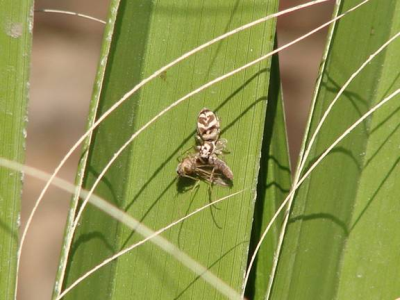
Fig (1)
A Skilful Hunter
Photo by Aymen Ibrahem, Senior Astronomy Specialist
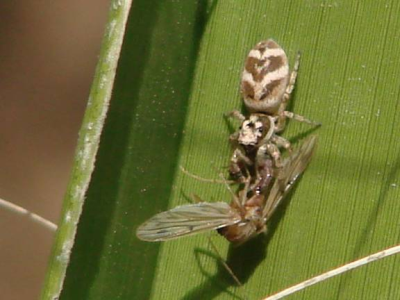
Fig (2)
Two-faced Predator
Four of the jumping spider's eyes can be seen in this close-up image, confusingly giving the impression that the spider is double-faced.
Photo by Aymen Ibrahem, Senior Astronomy Specialist
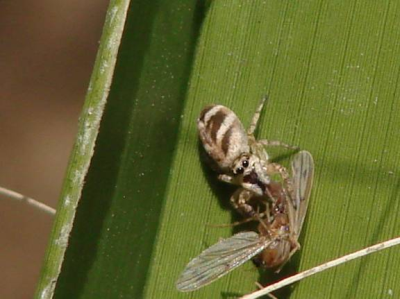
Fig (3)
Looking at the Photographer
The largest forward eyes of the jumping spider are facing Ibrahem's camera in this image.
Photo by Aymen Ibrahem, Senior Astronomy Specialist
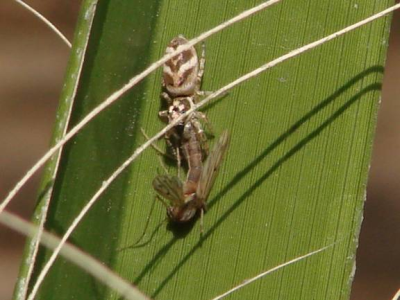
Fig (4)
Towing the Prey
Photo by Aymen Ibrahem, Senior Astronomy Specialist
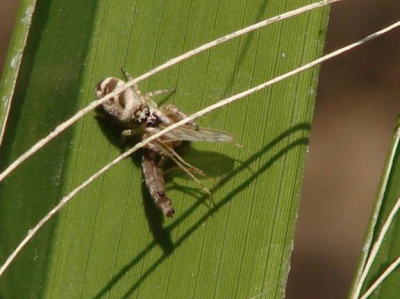
Fig (5)
Thriving
Photo by Aymen Ibrahem, Senior Astronomy Specialist
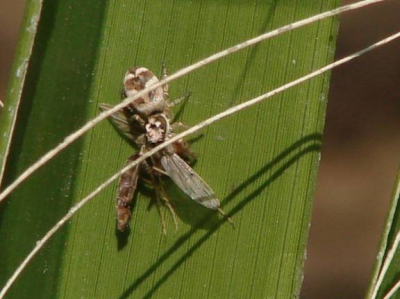
Fig (6)
Grip of a Predator
Photo by Aymen Ibrahem, Senior Astronomy Specialist
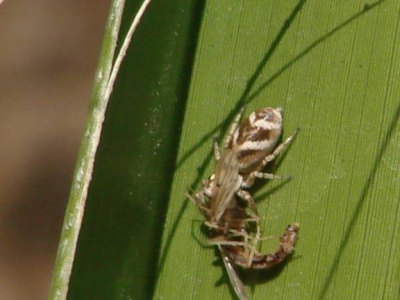
Fig (7)
Ferociousness
Photo by Aymen Ibrahem, Senior Astronomy Specialist
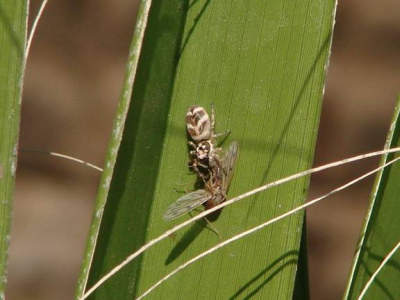
Fig (8)
A Hungry Insectivore
Photo by Aymen Ibrahem, Senior Astronomy Specialist
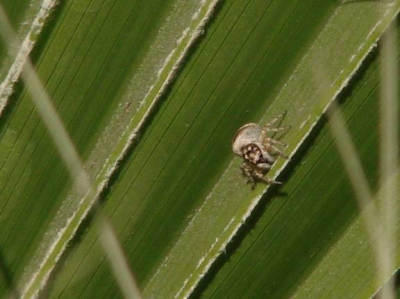
Fig (9)
Estimating Height
A jumping spider uses its keen eyesight in estimating the distance of a jump.
Photo by Aymen Ibrahem, Senior Astronomy Specialist
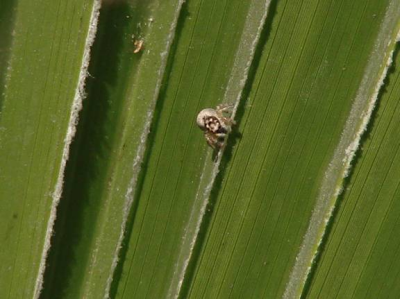
Fig (10)
About to Jump
Photo by Aymen Ibrahem, Senior Astronomy Specialist
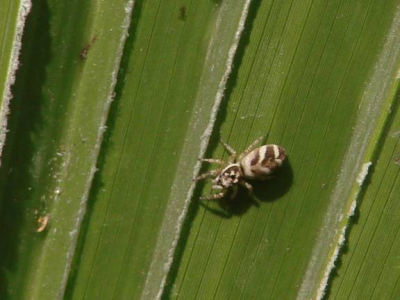
Fig (11)
An Eight-legged Predator
Photo by Aymen Ibrahem, Senior Astronomy Specialist
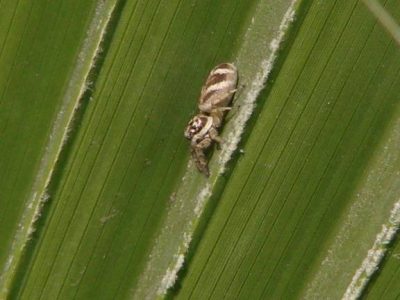
Fig (12)
Back to Home
Photo by Aymen Ibrahem, Senior Astronomy Specialist
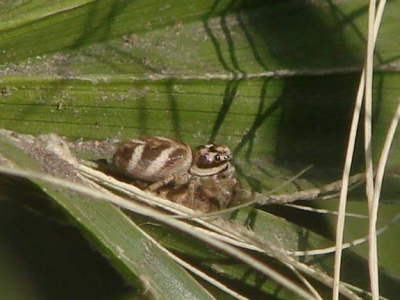
Fig (13)
Abode of a Predator
Three of the spider's eyes can be seen in this picture.
Photo by Aymen Ibrahem, Senior Astronomy Specialist
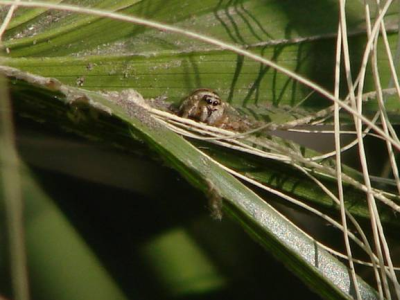
Fig (14)
Spider Seems a Bit Tired
It was not an easy catch.
Photo by Aymen Ibrahem, Senior Astronomy Specialist
Further Reading
Calm after the Storm
http://www.bibalex.org/eclipse2006/News_Details.aspx?id=199
Glowing Beauties
../home/NewsDetail.aspx?Find=1oGFAeoWofy1n%2beHrTGrKA%3d%3d
Aymen Mohamed Ibrahem
Senior Astronomy Specialist